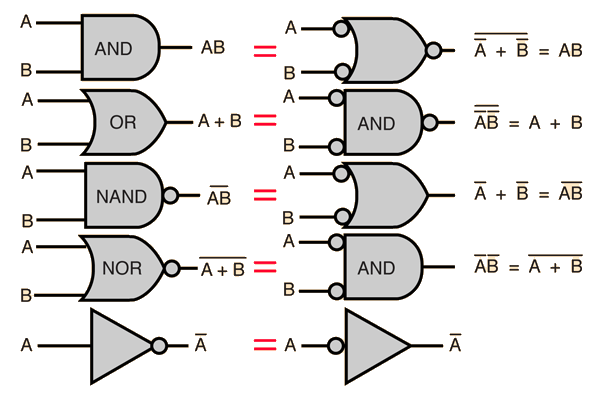tezza
Veteran Member
This is a newbie question but I’ve tried to google an answer without success. I know some of you guys will know the answer to this straight off.
I’m mystified how logic ICs work with digital circuits carrying data? I know the principles of these ICs work i.e. how H or L inputs determine a certain output (either H or L) but what happens when a oscillating wave is used as input, as you would get in a computer circuit carrying data.
I’ve always assumed if a wave was used as an input, the output would also be a wave? If could be inverted or changed by other inputs but it would always be a wave. After all a wave is just a circuit oscillating between H and L except many times a second.
However recently I’ve been using an oscilloscope for diagnostic purposes and have discovered my assumption may be flawed. Take a TC40H139P IC. This is a dual decoder/multiplexer. Where a wave appears on ENABLE, or INPUT A or B, I would have expected a wave on all Y0-3 outputs? The exception being if ENABLE is steady H, in which case it doesn’t matter what A and B is, it will always be H.
This is not the case. When there is a Wave on either ENABLE, A or B, some of the outputs are a steady H and some are waves? I don’t know how to interpret truth tables with signals that carry a wave. I’d always assumed the signal would be flicking back and forth between H and L and the output would usually do so as well unless the truth table says it’s forced into a H unconditionally, by another input. This doesn’t always seem to be the case though.
Is someone able to explain it to me?
Tez
I’m mystified how logic ICs work with digital circuits carrying data? I know the principles of these ICs work i.e. how H or L inputs determine a certain output (either H or L) but what happens when a oscillating wave is used as input, as you would get in a computer circuit carrying data.
I’ve always assumed if a wave was used as an input, the output would also be a wave? If could be inverted or changed by other inputs but it would always be a wave. After all a wave is just a circuit oscillating between H and L except many times a second.
However recently I’ve been using an oscilloscope for diagnostic purposes and have discovered my assumption may be flawed. Take a TC40H139P IC. This is a dual decoder/multiplexer. Where a wave appears on ENABLE, or INPUT A or B, I would have expected a wave on all Y0-3 outputs? The exception being if ENABLE is steady H, in which case it doesn’t matter what A and B is, it will always be H.
This is not the case. When there is a Wave on either ENABLE, A or B, some of the outputs are a steady H and some are waves? I don’t know how to interpret truth tables with signals that carry a wave. I’d always assumed the signal would be flicking back and forth between H and L and the output would usually do so as well unless the truth table says it’s forced into a H unconditionally, by another input. This doesn’t always seem to be the case though.
Is someone able to explain it to me?
Tez

